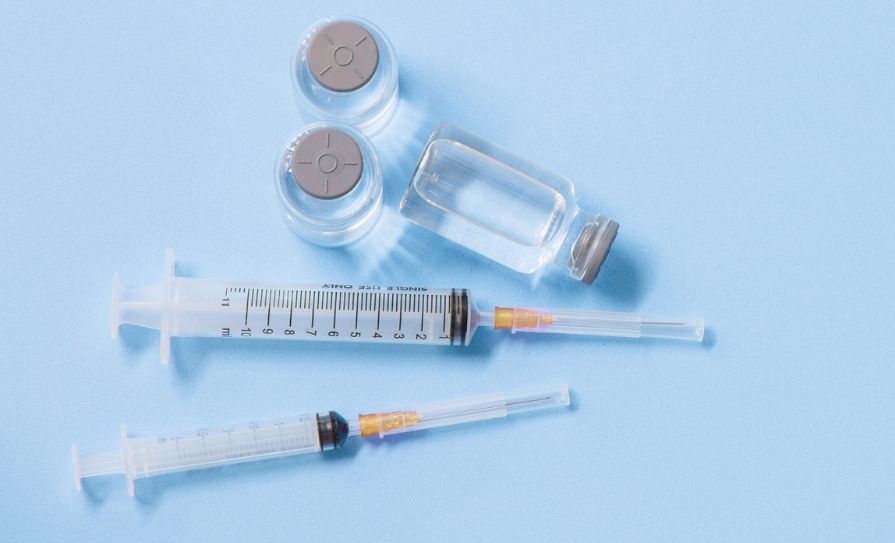A recent virtual conference heard from a range of influential speakers on patient care during the
pandemic and the future for dermatology practice when Covid-19 has become a thing of the past
The conference, held in September 2020, was supported by Relife, an A.Menarini company, and was titled ‘New Frontiers After the Global Pandemic’ and featured a range of international expert clinicians who gave their perspectives on how the pandemic has affected their clinics and how they see the future unfolding. The event was moderated by Dr Neal Bhatia, Director of Clinical Dermatology at Therapeutics Clinical Research, San Diego, California, US, and Interim Programme Director and Associate Clinical Professor at the Harbor-UCLA Medical Centre Division of Dermatology, California; and Dr Aimilios Lallas, Dermatologist-Venereologist and Doctor of the Medical School of Aristotle University of Thessaloniki, Greece, and co-founder and head of the Dermatology Unit of the BioClinic of Thessaloniki.
The attendees heard from a panel that included Dr Adelaide Ann Hebert, Chief of Paediatric Dermatology at McGovern School of Medicine and Children’s Memorial Hermann Hospital, Houston, Texas, US; Prof Giuseppe Micali, Full Professor and Head of the Department of Dermatology, University of Catania, Italy, and Director of the Residency Programme in Dermatology, University of Catania, Italy; Dr Peachy Paz-Lao, President, Philippine Dermatological Society and Officer-in-charge, Aesthetic Centre Head, Laser and Phototherapy Centre and Former Chair, Department of Dermatology, Makati Medical Centre; Prof Giovanni Pellacani, Dean of the Faculty of Medicine and Surgery and Chairman of the Department of Dermatology, University of Modena and Reggio Emilia, Italy; and Prof Pietro Rubegni, Full Professor and Head of the Department of Dermatology, University of Siena, Italy.
Potential
Prof Rubegni and Dr Bhatia spoke on the topic ‘Teledermatology: Is this the Future of Dermatological Practice? Pros and Cons’ and Prof Rubegni told the attendees that in 1995, dermatology was one of the first specialties to perform telemedicine and envisage its potential: “The idea of moving data and not patients is not a new one. In our consultations, we use our eyes 90 per cent of the time, and then all the other senses. In Siena, after a first face-to-face consultation, it is possible to follow patients who suffer with ulcers, for example. A nurse can connect with you and you can decide day-by-day what has to be done with these patients,” he said. “We can say the same about pressure sores; if patients cannot leave their houses, we have to follow them somehow.”
Another potential is to follow dermatology patients in the emergency department, he told the meeting. “In Siena, we have 30 or 40 emergencies [in dermatology] every day and these are not all the same, so we can use telemedicine to decide the priorities in these consultations. Another important issue to consider is what we can do in inflammatory diseases,” he continued. “Also, sometimes patients with autoimmune diseases can be very problematic. We have the opportunity to make a first diagnosis, but then we can monitor and follow them from our hospital to their house. You can imagine how this is important for patients who are in chemotherapy infusion centres, for example.”
Prof Rubengi explained that teledermatology can reduce time and costs in patient treatment and said that in common with other specialties, dermatologists have been required to limit face-to-face visits to urgent cases because of social distancing guidelines. “This generated two main problems — how to adequately triage the severity of the case by a simple phone call, and how to assist all other patients with subacute or chronic dermatological conditions,” he said. “Without doubt, teledermatology is the answer and the solution to these needs and for those who did not use teledermatology until now, then now is an excellent moment to start.”
Prof Rubegni concluded by telling the meeting: “I think the global Covid-19 pandemic underscores not only the potential of telemedicine to reach patients unable to attend their medical appointments in person, but also its absolute necessity as an integral form of healthcare delivery and the surmountable nature of many previously noted barriers to its adoption.”
‘Pros and cons’
Prof Bhatia gave the meeting some examples of how telemedicine is being conducted in the US and said there were “pros and cons” to the system there. “Triage is a key to using computers and smartphones to send images for teledermatology, which has been the American experience,” he said. “However, it has been a bit difficult and challenging… it turned into a very difficult scenario for some, and a very easy one for others.” In the US, there are small dermatology clinics that are independent, while others are part of academic institutions or healthcare systems. “The healthcare systems have IT departments, computer systems and software that can work well for telemedicine but for smaller clinics, it can be a detriment to their daily practice if they try to incorporate something too soon without the right equipment,” said Prof Bhatia.
While some thought telemedicine was a transient element of healthcare, as summer approached, it became clear that many were planning to continue using telemedicine even when the pandemic has passed, explained Prof Bhatia. He also presented models of how the system works in clinics in the US and showed data to illustrate that almost 96 per cent of institutions that offered telemedicine did not offer information to indicate “what the next step would be and what conditions would be appropriate for the next evaluation”.
“There was even a discussion of a new type of dermatologist, the ‘virtualist’… it was considered that perhaps dermatologists coming towards the end of their career could actually work from home, be the triage dermatologist, and basically create a new waiting room for patients who were not willing to come into the office and possibly wait for their appointments and make outpatient virtualists the ones who could actually make the diagnoses, establish the treatment plan and even schedule for biopsies under safer conditions,” said Prof Bhatia.
“A debate then arose in the US around live and direct video images that led to direct telemedicine visits, versus ‘store-and-forward’ technology. And of course, the videoconferencing and chat… and then the debate arose around whether photo storage and photo visit are the same as a real visit, and should it be reimbursed and should it be considered legally sound,” he told the meeting. “Cosmetic consultations thrived during the pandemic; they were done with a cash deposit and obviously, they were not subject to the same scrutiny [legally] and of course that leads to a whole different discussion.”
Lockdown
Prof Micali spoke next on the topic ‘The Italian dermatologic community facing Covid-19 pandemic: Recommendation from the Italian Society of Dermatology and Venereology’ and told the conference: “During the lockdown in Italy, it was estimated that dermatology consultations were reduced by 80-to-90 per cent in outpatient consultations in both outpatient and public hospitals and private offices,” he said. “Dermatology settings were considered at serious risk for contagion for several reasons, including the close contact required for an accurate skin evaluation; the lack of office facilities with adequate biosafety requirements; and the shortage of supplies of personal protective equipment (PPE).”
During the pandemic, more than 150 frontline physicians in Italy lost their lives, Prof Micali pointed out, “so they died in service, fighting the pandemic”. SIDeMaST, the Italian Society of Dermatology, prepared an emergency plan that included information sheets for patients and dermatologists, titled VADEMECUM, and Prof Micali presented some examples of the recommendations it contains. These included that non-urgent consultations should be avoided in cases of fever, cough or flu-like symptoms; priority for dermatology consultations in public institutions should be established by a GP; no accompanying person is allowed during the visit, with the exception of minors or a caregiver and all should undergo a temperature check with an infrared remote thermometer; and surgery for suspected skin cancer is usually warranted and scheduled according to operating room availability.
Prof Micali added that SIDeMaST encourages and promotes the use of teledermatology in non-urgent cases, which can decrease the number of patients attending hospital clinics and assist in providing continuing care. A teleconsultation system for patients who have tested positive for Covid-19 has been set up to evaluate the onset of new skin lesions, he added.
“The Covid-19 pandemic is still far from its end,” Prof Micali concluded. “I hope this information will be useful to physicians who practise in those countries in which the pandemic still presents a threat.”
Oxidative stress
Prof Hebert and Dr Paz-Lao next addressed the meeting with a talk titled ‘New horizons in AD pathogenesis and targeted treatment towards oxidative stress’. Prof Hebert provided an overview of current advances in atopic dermatitis, how these advances are influencing patient care, and current guidelines for care in atopic dermatitis. “Oxidative stress has been linked to chronic diseases such as cardiovascular disease, diabetes, neurodegenerative disorders, inflammatory diseases and cancer,” she told the conference. “We know that it is very important to understand the pathophysiology of atopic dermatitis because it has such an impact on how we use new and emerging therapies,” said Prof Hebert.
She contrasted the US and European models of care for atopic dermatitis and noted that use of a moisturiser is imperative across the spectrum of therapeutic interventions that are considered fundamental in the management of atopic dermatitis. “Basic therapy, including education in emollients, is highly emphasised in the guidelines,” Prof Hebert told the meeting. “We recognise the complexities and the reasons why patients develop and continue to have atopic dermatitis… we also recognise that the barrier abnormality is not just an epiphenomenon, but is truly the initiator of the pathogenesis of atopic dermatitis.”
She concluded: “New targeted therapies, particularly with emollient devices that are enriched with furfuryl palmitate, may be a new focus as we go forward in managing patients with atopic dermatitis. Recognising the importance of these antioxidants and the role of oxidative stress in atopic dermatitis will become a new focus and we will discuss this further as time goes on.”
… It is very important to understand the pathophysiology of atopic dermatitis because it has such an impact on how we use new and emerging therapies
Dr Paz-Lau discussed the future for the treatment of atopic dermatitis (AD) and unmet needs in the Asian Pacific region and told the meeting that the pathophysiology of atopic dermatitis is usually centered around three things: A dysfunctional epidermal barrier; skin microbiome abnormalities; and skewed immune dysregulation. “Basic management strategies usually come in threes — number one, you avoid individual trigger factors; two, you restore the skin barrier with moisturisers; and three, a step-up and step-down approach, where you reduce inflammation,” said Dr Paz-Lau.
She provided an overview of JAK inhibitors and common therapies and barrier repair, and moisturisers that may contain irritants should be avoided, said Dr Paz-Lau. “The consensus on cleansers is that non-soap, fragrance-free cleansers with neutral-to-low PH should replace soaps, bubble baths and shower gels,” she said.
Overall, despite the fact that AD is a chronic disease and patients in remission will retain a life-long predisposition, the prospects for treating and managing the disease are good. However, there are still unmet needs, said Dr Paz-Lau. “There is a need to develop therapies that specifically target pathogenically relevant mechanisms as novel anti-inflammatory drugs. However, the problem of finding an effective and durable restoration of the skin barrier needs to be solved. “We need to identify biomarkers in order to better classify subgroups of AD patients with respect to treatment response and to monitor efficacy and safety of therapy.”
Dr Paz-Lau added that there are also unmet needs in preventing AD, or at least delaying its onset, and to modify the disease course and “atopic march”, and more study is required on the interdependency of AD and its comorbidities. There is also a need to raise social awareness of the medical, psychological and economic burden of AD and to guarantee support for AD patients.
“As we learn to better understand the pathogenic mechanisms, we may be able to treat and modify the disease course of AD, as well as the development of other atopic/allergic diseases, even in the near future,” she concluded. “The recently-acquired knowledge on comorbidities will help immediately with their identification and provide appropriate medical and psychological assistance for AD patients.
“Novel targeted therapies now promise to act specifically on key players in the pathogenesis of AD, to be effective and safe, and enable personalised medicine.”
‘Second pandemic’ of dermatitis
The final speaker at the conference, Prof Pellacani, spoke on ‘DPI dermatitis in Covid-19 era and rationale for emollient combination with antioxidant for treatment of eczema’. He told the attendees that one of the consequences of Covid-19 has been a significant increase in the prevalence of occupational skin disease among healthcare providers.
He referred to a “second pandemic of dermatitis” and told the meeting: “We know that the roots of prevention [against Covid-19] are generating stress to the skin… we are continuing to use this prevention and we are seeing more and more patients. In the pre-Covid era, the prevalence of occupational skin disease among healthcare providers was around 30 per cent,” said Prof Pellacani. “In the Covid era, this has gone up to more than 80 per cent. That is a huge number and of course if healthcare providers continue to work with dermatitis patients, they are severely impaired in their work.”
Regarding the prevalence of contact dermatitis among patients due to wearing PPE, 21 per cent of patients have suffered from work absenteeism due to some form of dermatitis, he pointed out. “The use of soaps, alcohol, gloves and other substances is damaging the skin barrier,” said Prof Pellacani. “This damage is increasing trans-epidermal loss and reducing hydration, enabling the penetration of irritants and allergens, causing a cascade of inflammatory effect that leads to contact dermatitis.”
Prof Pellacani provided an overview of therapeutic products suitable for contact dermatitis caused by cleansing agents and gave an overview of the International League of Dermatological Societies (ILDS), an organisation with a mission to “increase awareness, co-operation and communication with the global dermatology community to promote high-quality education, clinical care, research and innovation that will improve skin health globally”.
Prof Pellacani said: “A.Menarini is a great supporter of the ILDS, which is doing a great job in the time of Covid. It has begun to help in skin health and its mission is to bring all the global dermatology community together, such as with webinars like this one.”







